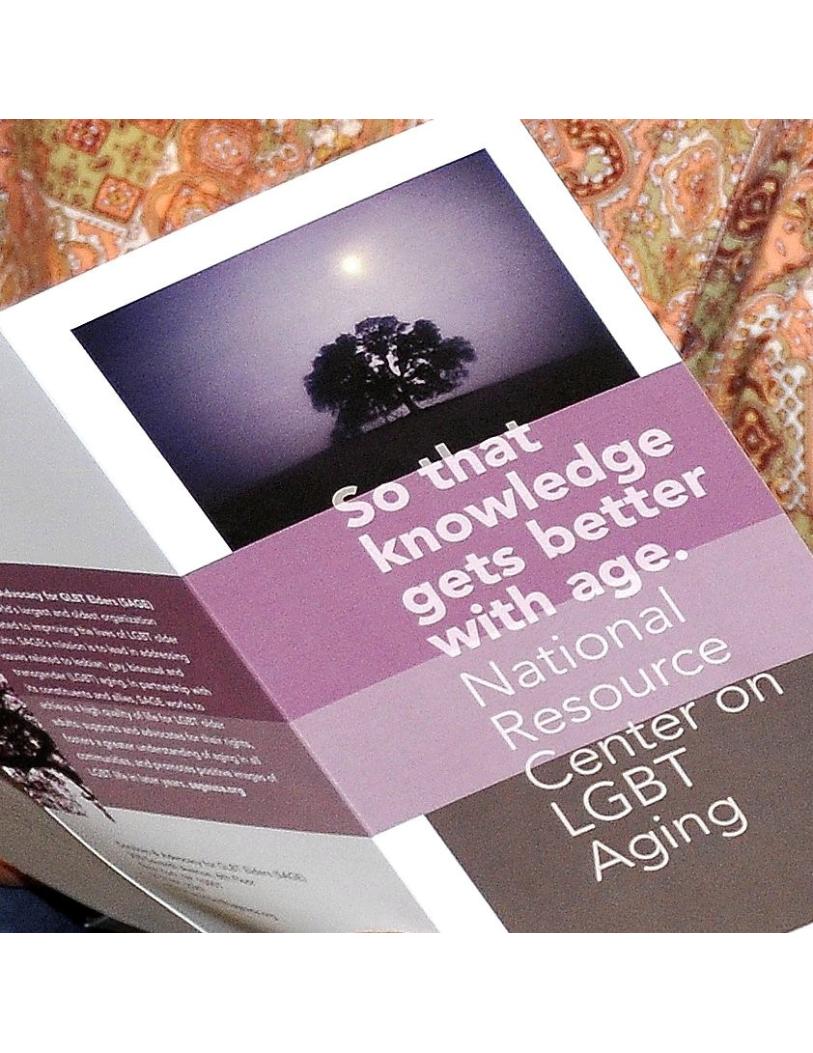The Need for LGBT-Inclusive Housing
April 2014 | SAGE
Secure, stable and affordable housing is a necessary component for healthy aging. In practical terms, a home is a physical shelter from the elements. However, people also feel a powerful emotional connection to their homes—it is a place where they can feel safe to be themselves, free from intimidation, harassment or discrimination. For LGBT older adults, who came of age during a time before people began living openly and being LGBT was often misunderstood and grounds for fear and harassment, safe homes are especially important.
Unfortunately, this security is denied to many LGBT older adults. Many LGBT older adults experience fear, intimidation and harassment in their private homes as well as in nursing homes or assisted living facilities, making their living situations physically and emotionally unhealthy. In addition, due to higher levels of financial insecurity and lack of affordable housing, many LGBT elders find that they cannot afford homes in the communities they may have lived in for years.
Discrimination and Harassment
LGBT elders often face discrimination when buying or renting a home, and may be denied housing, including residency in mainstream retirement communities. A 2009 study by Michigan’s Fair Housing Centers found that nearly 30 percent of same-sex couples were treated differently when attempting to buy or rent a home. Another study found that 33 percent of gay and lesbian respondents thought they would have to hide their sexual identities if they moved to a retirement home.[i]
Transgender persons have been found to experience even higher rates of discrimination, abuse and harassment than the non-trans LGB population. In one of the largest national studies of transgender and gender non-conforming individuals, 19% reported being denied the sale or rental of a home or apartment, with the rates even higher among people of color: 47% among transgender or gender non-conforming American Indians and 37% among African Americans.[ii] In addition, 11 percent of individuals in the same study reported being evicted because they were transgender or gender non-conforming. This rate nearly tripled among African Americans, with 37 percent reporting that they were evicted because of their gender identity or expression.[iii]
The available research has shown that LGBT older adults experience high levels of harassment in their private homes. For example, according to a recent report, a gay male couple in Northern California living in their privately owned home endured years of harassment from neighbors. Fortunately, the couple lived in a state that outlaws discrimination based on sexual orientation and were able to take the neighbors to court and win a hefty settlement.[iv]
While this particular couple was protected by law and won a settlement, it is unknown if the harassment stopped or if relations improved thereafter. Moreover, studies show that this trend of harassment toward LGBT couples and individuals is widespread. The Michigan Fair Housing Commission study stated that gay and lesbians reported verbal harassment from landlords and realtors, and believed they were shown less desirable units and homes, quoted higher prices than listed, and even encountered direct refusal when looking to rent or sell.[v] Unfortunately, protections from housing discrimination are not yet enforced nationwide, and currently only 20 states and the District of Columbia have anti-discrimination laws based on sexual orientation, and 15 states have anti-discrimination laws based on gender identity or expression. Further, the federal Fair Housing Act does not specifically prohibit discrimination based on sexual orientation or gender identity, leaving a large segment of the country’s LGBT aging population living outside these areas largely without legal protections.
Affordability
According to The Williams Institute, LGBT older adults lose more than $124 million in benefits because their relationships and marriages are not recognized by the federal government.[vi] This limited access to federal benefit programs (including Social Security and Medicaid) as well as the uneven rules regarding LGBT couples and tax-qualified retirement plans, employee pensions, and estate taxes, places them at a significant disadvantage in saving for retirement and keeping up with increases in rents, home maintenance, and other housing expenses. LGBT older adults of color face even greater disparities in income and ability to save, due to fewer resources, racial discrimination, and less economic capital. In one study of nearly 500 LGBT older adults in San Diego, 45% reported varying levels of difficulty paying their monthly mortgage and rent, 37% reported having difficulty affording their monthly utility bills, and 41% reported difficulty affording monthly food and household expenses. Lesbians, bisexual women, and women who have sex with women (WSW) are thought to have even further difficulties affording housing and other related bills, as women, regardless of sexual orientation, have been found to earn less than men over the course of their lifetimes.
Community, Companionship and Comfort
Research has consistently shown that LGBT older adults are less likely to have children to care for them, less likely to have someone to call on in time of need, and are at much greater risk for social isolation than their heterosexual peers. Therefore, many of them have created strong social networks and families of choice within the LGBT community. LGBT older adults in the same San Diego LGBT study, stated the desire to age at home rather than move, but when asked about options, over 90 percent indicated a preference for LGBT-specific housing if it were available, and 94 percent of the same cohort reported a preference to live alongside other LGBT adults.
Given the increasing numbers of LGBT older adults in the U.S., efforts to secure housing for LGBT elders are on the rise. While there is not yet enough LGBT-specific housing for all LGBT older adults who need it, residential communities for LGBT older adults such as Triangle Square in Los Angeles or 55 Laguna Street in San Francisco have received considerable attention as potential models for other cities. In addition, in recent years, the Department of Housing and Urban Development (HUD) has announced proposals to minimize discrimination in nursing homes and in HUD-funded housing projects—promising steps to ensuring that LGBT elders will be able to find safe and secure homes.
[i] M.J. Johnson, J.K. Arnette, and S.D. Koffman, “Gay and Lesbian Perceptions of Discrimination in Retirement Care Facilities.” Journal of Homosexuality, 49(2), 2005.
[ii] Grant, J., Mottet, L., and Tanis, J. Injustice at Every Turn: A Report of the National Transgender Discrimination Survey. Washington D.C.: National Center for Transgender Equality and the National Gay and Lesbian Task Force, 2011.
[iii] Ibid.
[iv] Burns, Crosby, and Philip Ross. “Gay and Transgender Discrimination Outside the Workplace: Why We Need Housing, Health Care, and Public Accommodations.” Washington, D.C.: Center for American Progress, 2011.
[v] Ibid, 3.
[vi] Zians, Jim. “LGBT San Diego’s Trailblazing Generation: Housing and Related Needs of LGBT Seniors.” The San Diego Lesbian, Gay, Bisexual and Transgender Community Center. February 2011. Available at: http://www.thecentersd.org/pdf/programs/senior-needs-report.pdf.

